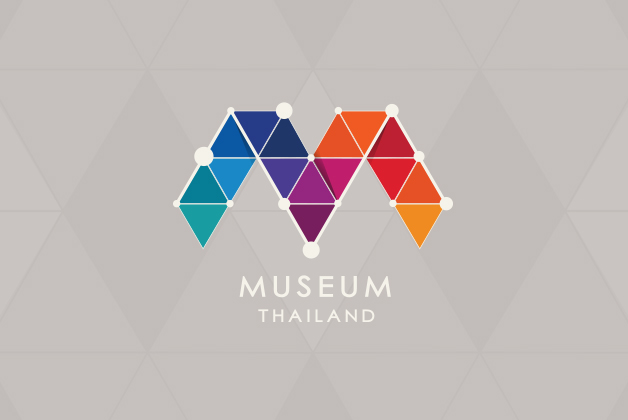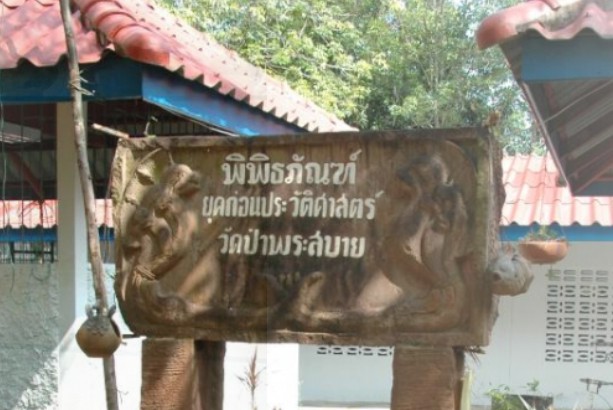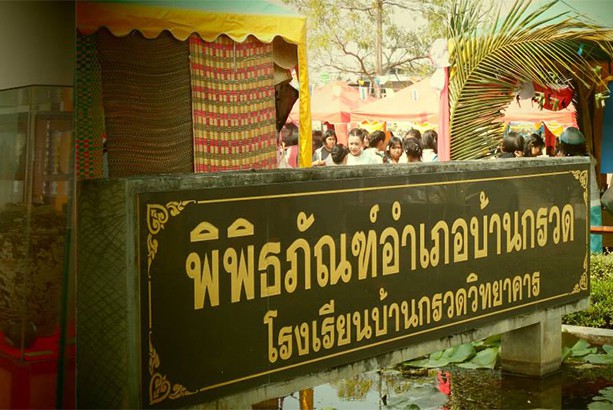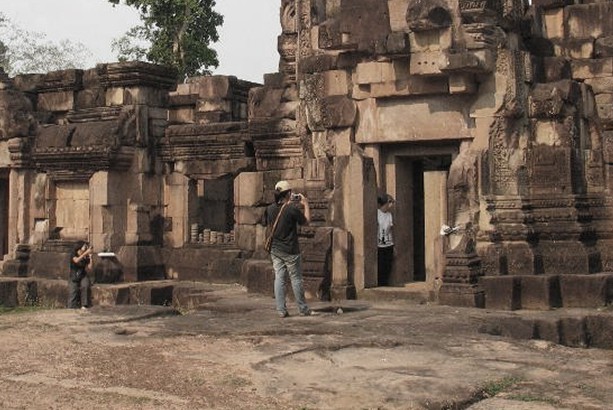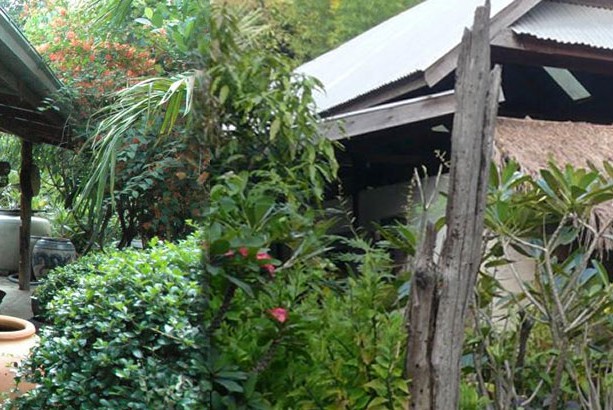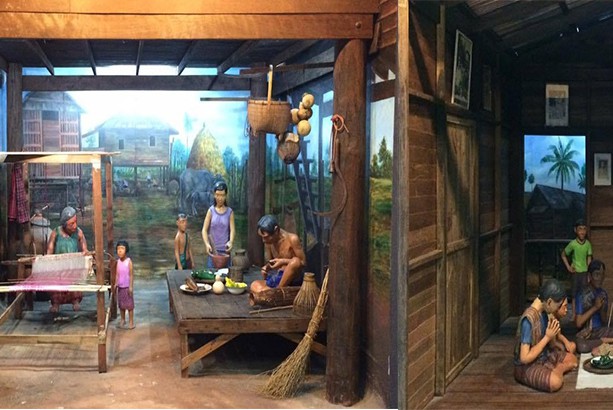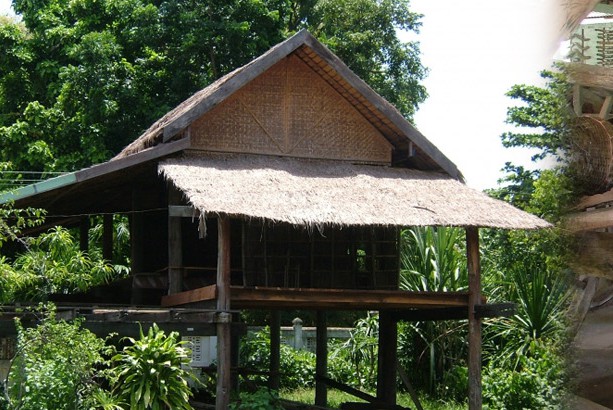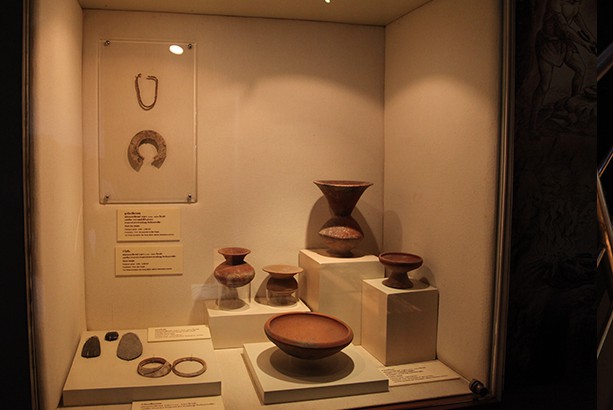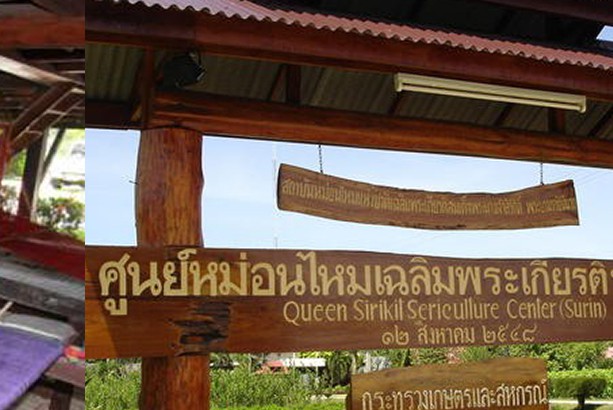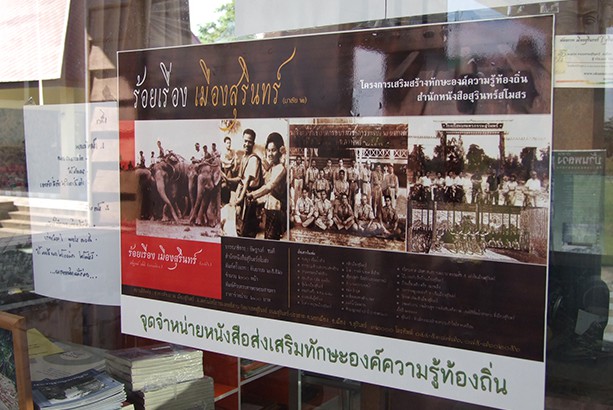Gallery
Information
Prasat Phanom Rung temple Located on top of Phanom Rung Mount, which is an extinct volcano. Phanom Rung is a magnificent ancient Lopburi art and one of the most significant places in Thailand. This religious site was built to honor Lord Shiva, the highest Gods in Hinduism. The Phanom Rung Mountain and temple on the hilltop, symbolizes Mount Krailas which is the heavenly dwelling of Lord Shiva, and liken to be the center of universe as well. Several additional buildings are constructed atop of the mount since the 15th -18th Buddhist century.
The name “Phanom Rung” is a Khmer word “Wanang roung” which means The vast mountain. The word appears in Khmer inscriptions found at Prasat Phanom Rung. Moreover, the temple’s creator name was also found, as "Naren Tharathit" a lineage of Mahithon Pura, the royal cousin related to the King Suriya Woraman II, the builder of Angkor Wat.
The significant artifacts inside Historical Park are such as,
Walkways leading up to the Naga bridges. Both sides parallel with sandstone pillars, called “Sao Nang Riang”
Naga bridges- The connection of Walkways with the stair, lead up to the temple and lead down to the pond top of crator, handrail of the bridge made as the 5-headed Naga, facing the four directions. Naga spread radius plate and etched in the landscape, which is similar with the art style of Angkor Wat and is a symbolise the passing from the earthly world into the world of the Gods.
The entrance gates and inner balconies – prior to the main sanctuary, there are balconies surrounded constructed as a continual rectangular rooms, but can not walk through to the other side, because of the interval of walls. Central cloister equipped with arch door or “Gopura” at all 4 exterior walls and faked 4 side windows. The carved of hermit on the gable, presumably referring to Lord Shiva in the form of ailment curator, and the meaning also may include "Naren Tharathit" who built this temple.
The main sanctuary is the center of inner temple, built with pink sandstone, a recess square layout with 3 extended porches. The rectangular sanctuary room at the East side connected with the walkway to the main sanctuary dated back to 17th Buddhist century. Inside the base room consists “Kanpha Karuha” the place enshrined the sacred Linga that symbolizes the strength of Lord Shiva. At present, there is only the pipeway that used for sacred water from Linga still in place. The inner sanctuarries are decorated with carvings of the Hindu Gods Shiva and Vishnu, as well as the scenes from the epic Ramayana, Hindu religious stories, e.g., the dancing Shiva (Dancing), Narai Banthomsin Lintel(Ramayana) and Mahabharata image.
The south entrance is guarded by a sandstone statue.
Two brick sanctuaries, assumed to be date around 15th century, which are the oldest structures of Phanom Rung Mountain.
A minor sanctuary is a recess square building with only one entrance to the East. There is a sandstone pedestal base inside for the respected statue. The front gable carved as the Lord Krishna, lifting Kowattana mountain amidst foliage pattern.
The library “Bannalai” is a rectangular building with single door, boat rooftop, and no respected statue found inside. The library is the place where sacred Hindu scriptures were kept.
Management
Organization Museum
Important / Interesting artifacts
Image of Lord Vishnu Anantasajin on the eastern lintel above the main entrance. Vishnu statue, the world famous lintel. This Vishnu image of Narai Banthomsin, the most famous lintel to the world, referring to Vishnu reclining on the Naga figure on the Great Ocean, which had gone missing from Phanom Rung temple for a long time, and had been searched throughout. Later it was found in USA. Claims by Thailand and scholars unite together to fight back the lintel and finally back to its place.
Map
Address And Contact Number
Telephone : 044-666 251
Fax : 044-666 252
Website : http://www.finearts.go.th/phanomrunghistoricalpark
Email : phnomrungoffice@yahoo.co.th
Operating hours
Everyday from 06.00 - 18.00 hrs. (No exception on national holidays)
Admission fee
Thai 10 Baht, Foreigner 200 Baht
Getting There
1. By car from Bangkok, Take Highway no.1 (Phaholyothin) via Saraburi - Nakhon Ratchasima - Buriram. Estimate duration of 6 hrs, total distance around 410 Km.
2. By bus, there are both ordinary and air-conditioned bus leave from Transport station Mho-Chit 2 to Buriram everydays, many rounds per day.
3. By train, the train leave Bangkok Railway station (Hua Lamphong) from Bangkok – Ubon Ratchathani, or Nakhon Ratchasima – Ubon Ratchathani, with rapid, express, ordinary, and Diesel which all trains pass Buriram.
4. By plane , There are daily flights on the route Bangkok - Buriram which takes about 1 hour.
Proper for General Public
Proper for Children
Credit Card
Advanced Booking
For group visit, a letter of visiting request must be made in advance.
Disability Information
Slope path available for disabled and elderly persons.
FACILITY
Available




 ขยายขนาดตัวอักษร
ขยายขนาดตัวอักษร



 เพิ่มระยะห่างตัวอักษร
เพิ่มระยะห่างตัวอักษร

 เส้นช่วยในการอ่าน
เส้นช่วยในการอ่าน
 เน้นการเชื่อมโยง
เน้นการเชื่อมโยง
 ปรับชุดสี
ปรับชุดสี








 NIGHT AT THE MUSEUM FESTIVAL
NIGHT AT THE MUSEUM FESTIVAL  E-Shopping
E-Shopping 
